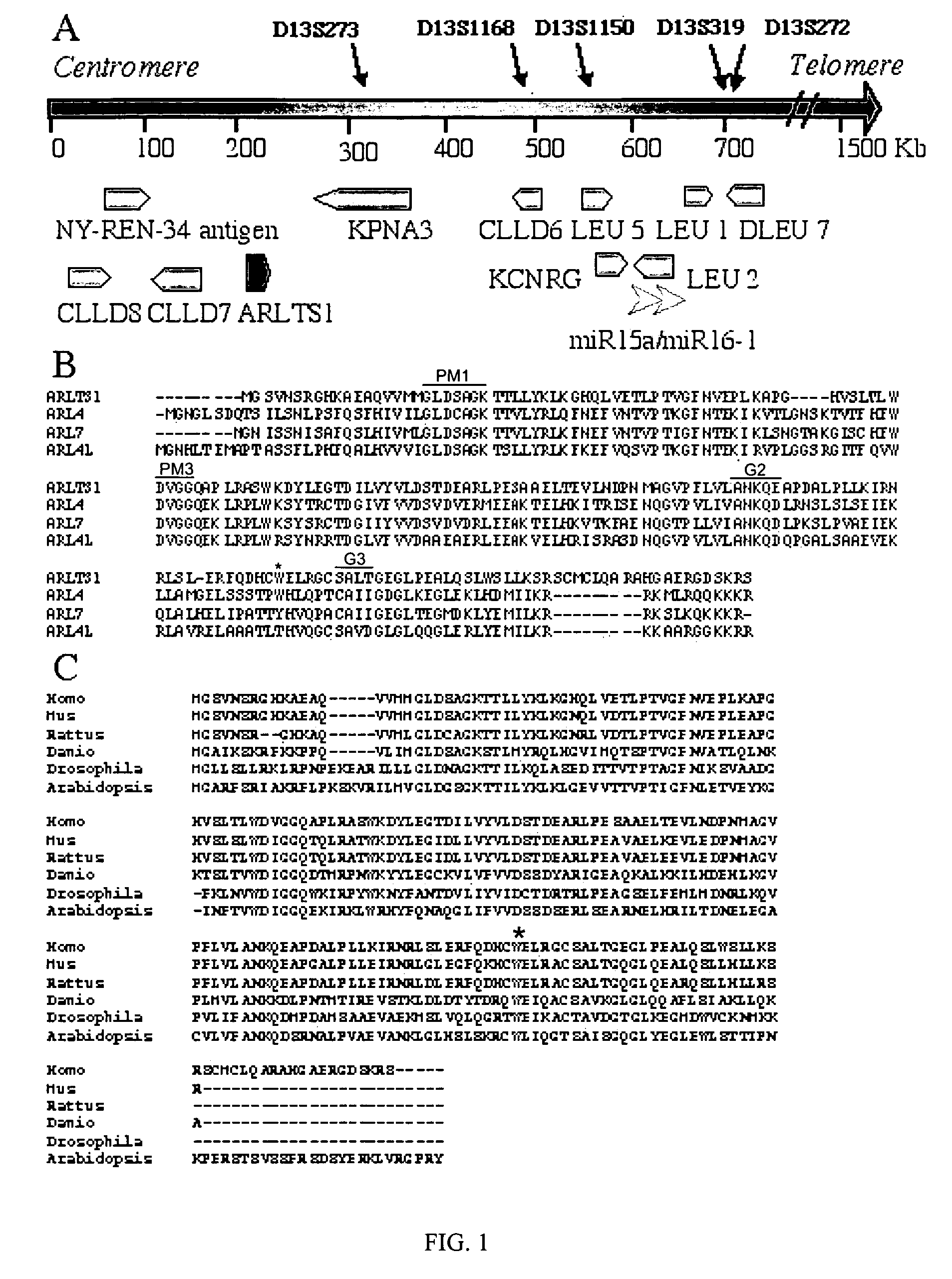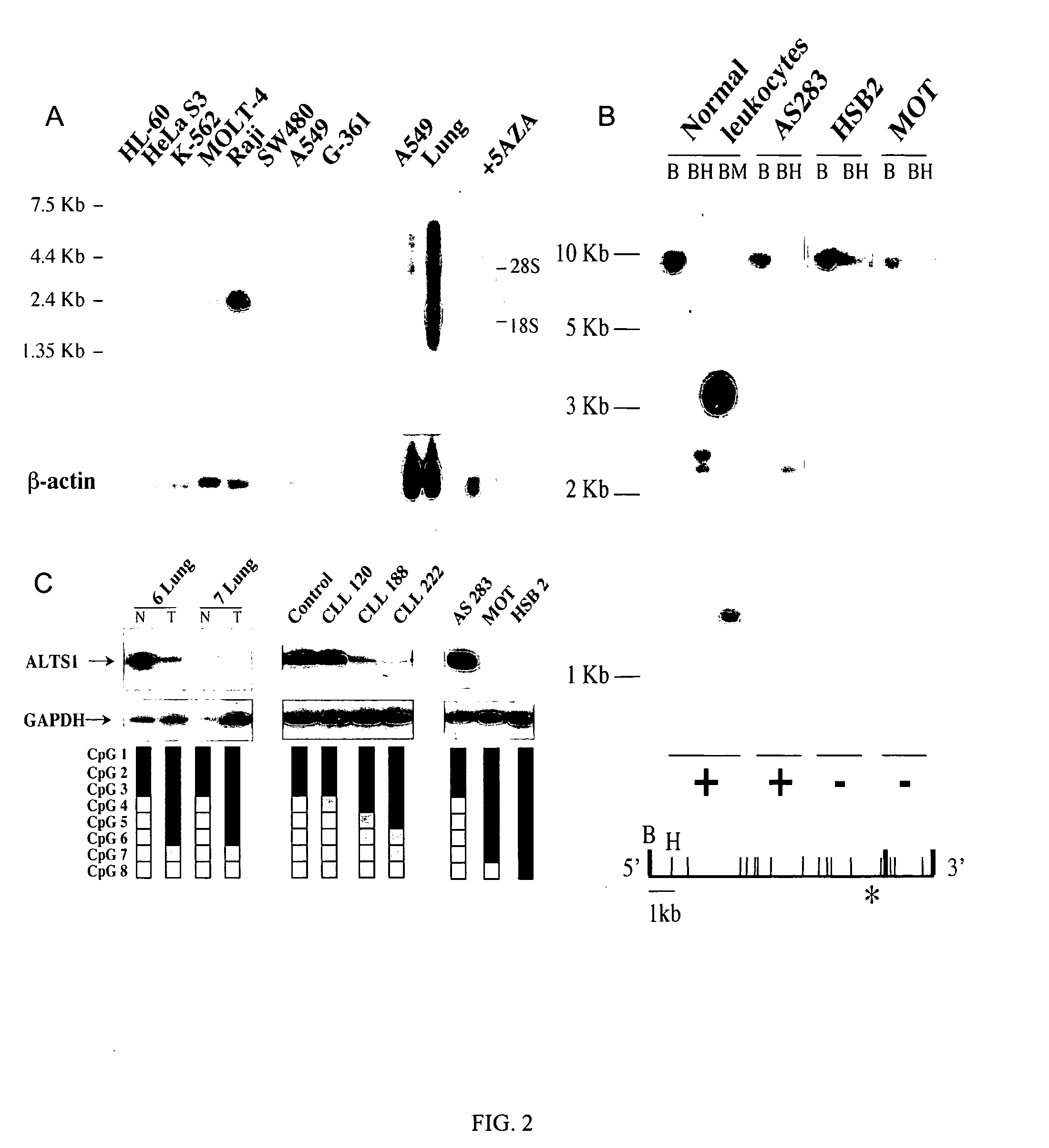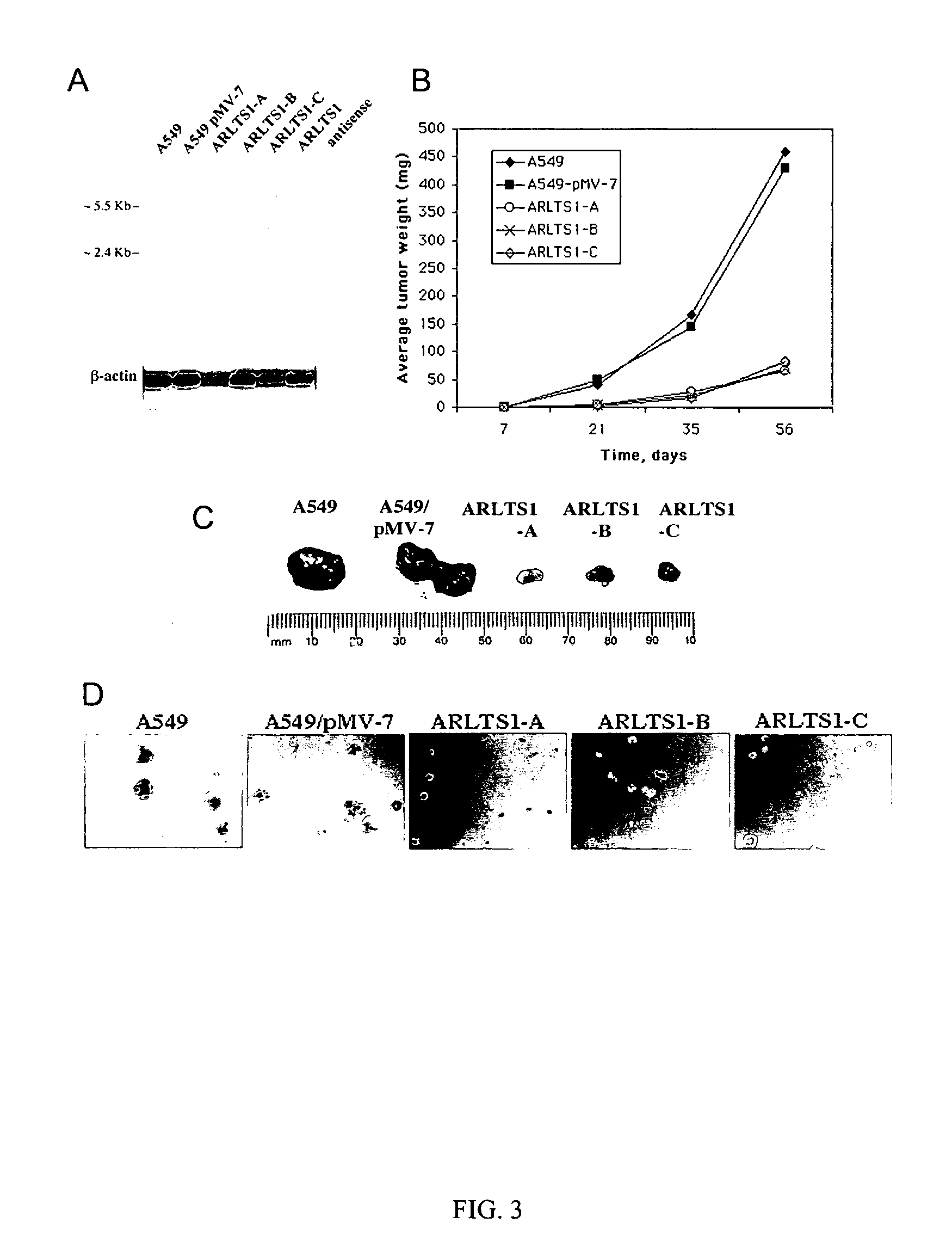Novel tumor suppressor gene and compositions and methods for making and using the same
a tumor suppressor and gene technology, applied in the field of identification and cloning of arts1, can solve the problem that none of the genes in the region were found to be inactivated
- Summary
- Abstract
- Description
- Claims
- Application Information
AI Technical Summary
Benefits of technology
Problems solved by technology
Method used
Image
Examples
examples
[0105] EXOFISH (Roest Crollius, et al., Nat Genet 25:235-8. (2000), which is incorporated herein by reference) was used to scan 1.4 Mb of assembled genomic sequence at chromosome 13q14 (Mabuchi, H., et al., Cancer Res 61, 2870-2877 (2001), Bullrich, F., et al., Cancer Res 61:6640-6648 (2001), Lander, E. S., et al., Nature 409:860-921 (2001), and Venter, J. C., et al., Science, 291:304-351 (2001), which are each incorporated herein by reference) for putative genes. A 182 bp ‘ecore’ (evoluntionary conserved region) coding for an aminoacidic sequence with high homology to several members of the ADP-ribosylation factor family was found. By using EST walking and RACE, the corresponding full-length cDNA was obtained. Comparison with the genomic sequence indicated that the cloned cDNA, which was designated ARTS1 (for ADP-Ribosylation factor-Like, putative Tumor Suppressor gene 1), derives from a small gene composed of two exons separated by a 1.8 kb intronic sequence and spanning about 6 k...
PUM
| Property | Measurement | Unit |
|---|---|---|
| Fraction | aaaaa | aaaaa |
| Fraction | aaaaa | aaaaa |
| Fraction | aaaaa | aaaaa |
Abstract
Description
Claims
Application Information
 Login to View More
Login to View More - R&D
- Intellectual Property
- Life Sciences
- Materials
- Tech Scout
- Unparalleled Data Quality
- Higher Quality Content
- 60% Fewer Hallucinations
Browse by: Latest US Patents, China's latest patents, Technical Efficacy Thesaurus, Application Domain, Technology Topic, Popular Technical Reports.
© 2025 PatSnap. All rights reserved.Legal|Privacy policy|Modern Slavery Act Transparency Statement|Sitemap|About US| Contact US: help@patsnap.com



